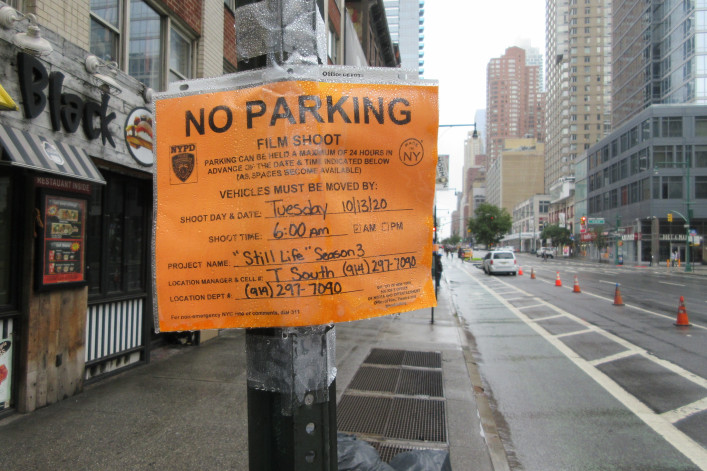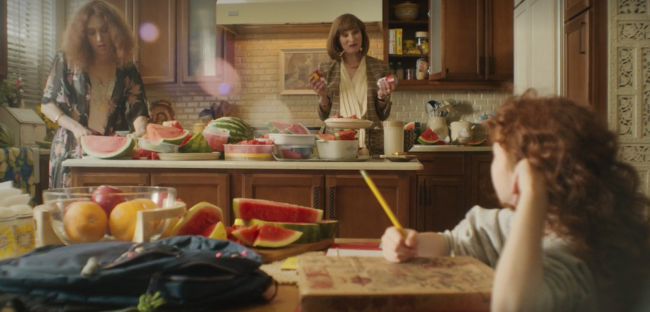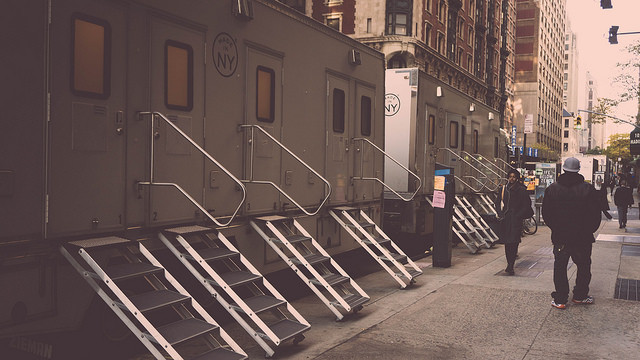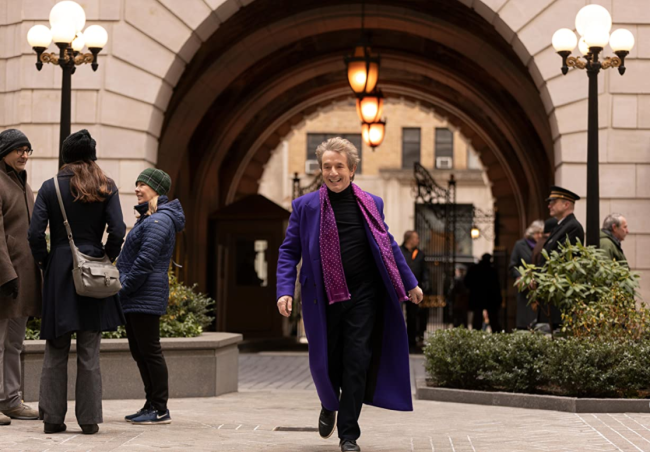That time my Brooklyn apartment was almost cast as a terrorist’s den on ‘Law & Order’

A show shot on the streets of New York City means a lot of NYC apartments (and restaurants and storefronts) are getting their own five minutes of fame.
Securing a role on a “Law & Order” series is a rite of passage for New York actors: After all, there are so many franchises, with fresh roles every week, so if you’ve got any talent you’re bound to get cast sooner or later. (Among those who passed through on their way to the top: Bradley Cooper, Viola Davis, Adam Driver, and Philip Seymour Hoffman.)
But what does it take to get your home a supporting role on this hit show?
I never really thought about it until a “Law & Order” location scout came knocking at my door, but a show shot on the streets of New York City means a lot of NYC apartments (and restaurants and storefronts) are getting their own five minutes of fame.
In my former neighborhood of Cobble Hill, television and movie productions routinely took over huge swaths of the area, with fluorescent signs tacked up to signal they were coming, followed by trailers, craft services tents, and cables, and ultimately lots of people with walkie talkies. It was clear why: The neighborhood's townhouse- and tree-lined streets and cute storefronts provided a perfect backdrop for everything from a rom-com meet-cute to a moody family drama, or even a superhero movie. (“Spider-Man 3” used the facade of the charming Cobble Hill Cinema, in addition to nearby Downtown Brooklyn.)
My building was not charming. In fact, on a street where a parmesan cheese factory was turned into million-dollar condos, our two-unit, three-story building was the lone, gritty holdout, sporting peeling paint and an industrial garage door on the ground floor. Which is why, I imagine, it caught the eye of a “Law & Order” location scout charged with the task of finding a suitable place to stand in as the den of a character who was a suspected terrorist or just plain disturbed. (A person who would clearly live in a gross, shitty apartment. My apartment.)
I believe it was me who answered the door when the scout rang our buzzer and explained that she worked for “Law & Order,” and wondered if she might be able to take a look at our apartment. (It was a long time ago, but I seem to remember opening the door and the crew member checking out our fluorescent-lit, cramped and grungy “foyer” with an encouraging look that signaled, “Oh yeah, this could work.” She also had accessories that seemed legit—a business card, something on a lanyard, I think—that made me feel reasonably sure she wasn’t a criminally insane person.)
“Sure, why not?” I agreed, and with that she was sweeping through our big, but crumbling—well under-market rate, I should note–apartment. Good thing we hadn’t fixed the living room ceiling’s crumbling plaster and water damage. (Gritty!) After a few minutes, she asked me if she could come back with the director and the producer so they could take a look. (“Sure, why not?”) They probably wouldn’t even come back.
They came back. And it wasn’t just the director and producer. It was, it seemed, everyone on the crew (I geeked out over their official L&O garb) and they swarmed our apartment, dotting in and out of rooms, “assessing.” (In a true New York City moment, my husband, a New York native, and one of the crew members recognized each other from high school, and both chose to ignore each other.)
I am not sure when during this process I became aware that our apartment was vying for the role of “home of mentally ill recluse,” but it was at this point that I learned that if “cast,” we’d need to vacate our place for three days: One for the load in, one for shooting, one for striking the set. I was also informed that of course they’d pay us for the trouble, maybe about $5,000. (My husband and I were in the final months of planning our wedding, and this seemed like a gift from the heavens.) We were in.
When I relayed this story to my mother, she was cautiously excited, asking how I knew they weren’t “robbers casing the joint,” an idea she must have picked up watching “Charlie’s Angel’s” or “CHIPs.” (This is an absurd idea for a number of reasons, but primarily because of all the places to rob in Cobble Hill via such an elaborate ruse, we were no doubt last on the list.)
And so we waited. The production was obviously moving pretty fast, and when we didn’t hear anything in a few days, we figured we’d missed our chance. (Someone around here has an apartment more disgusting than ours?)
Sure enough, the signs went up, the trailers rolled in, and they shot around the corner from our place. (Our street was used for trailers containing the bathrooms and other boring trucks.) I saw Jeremy Sisto and Anthony Anderson on my block and told them I was a fan of the show. And everything was gone as quickly as it had descended.
We did, of course, keep our eyes peeled for the scene our apartment didn’t get to star in. It went by in a flash during episode three of Season 20: “Great Satan.” A fan site recaps the moment like this: “The detectives…arrive at the apartment of Joe Darwish to a mess and awful smells. The people working the scene are wearing protective clothing and masks. Lupo and Bernard give Cutter and Rubirosa the high points: they found expired depression medication, a raw duck, and huge bottles of urine.” (Let the record show that we probably, at some point, had at least two out of three in our apartment. I mean, we were in Brooklyn.)
As much as we would have enjoyed the payday and the bragging rights, I guess it’s probably for the best, after all, that our place was not considered disgusting enough to support such a scene.
You Might Also Like



























